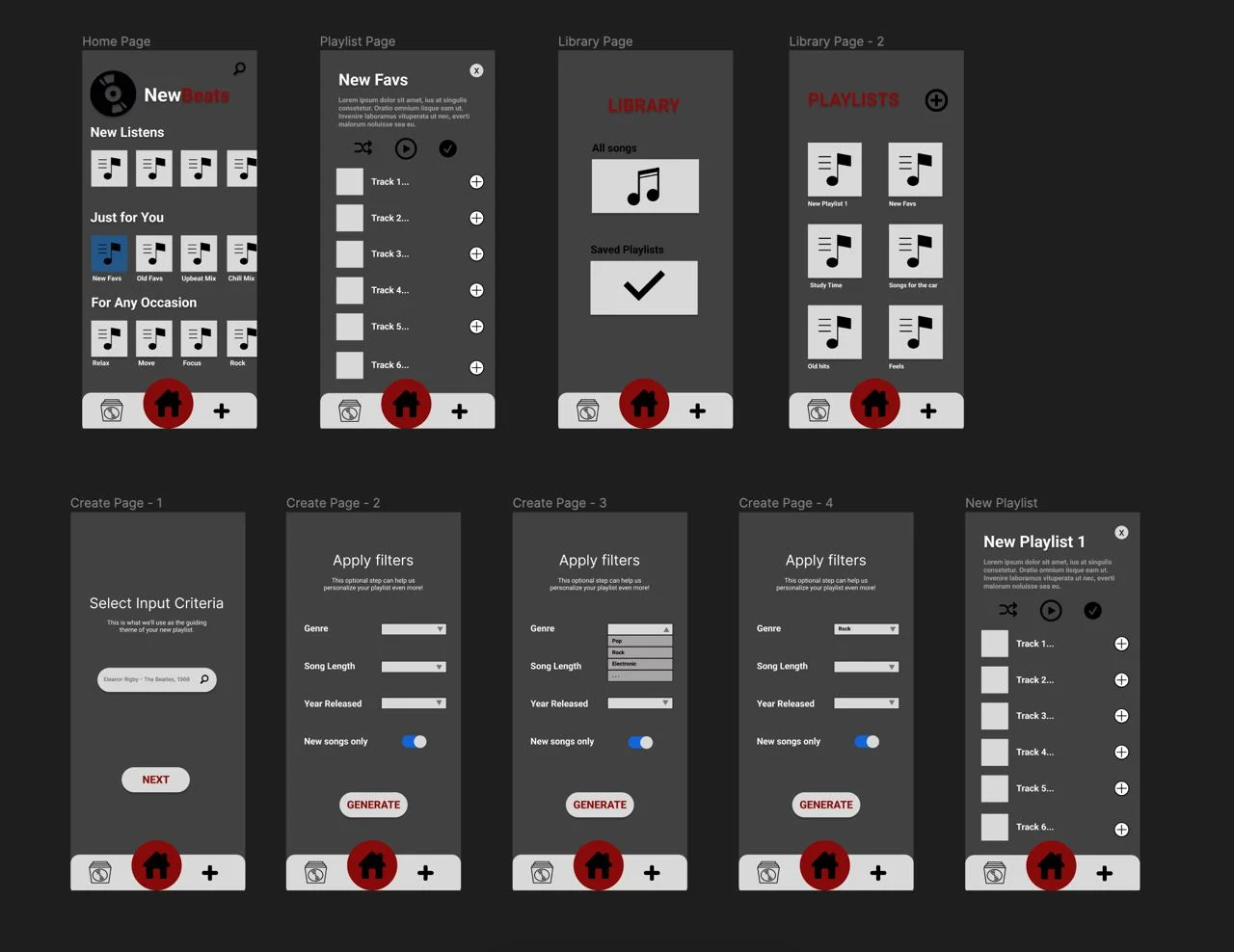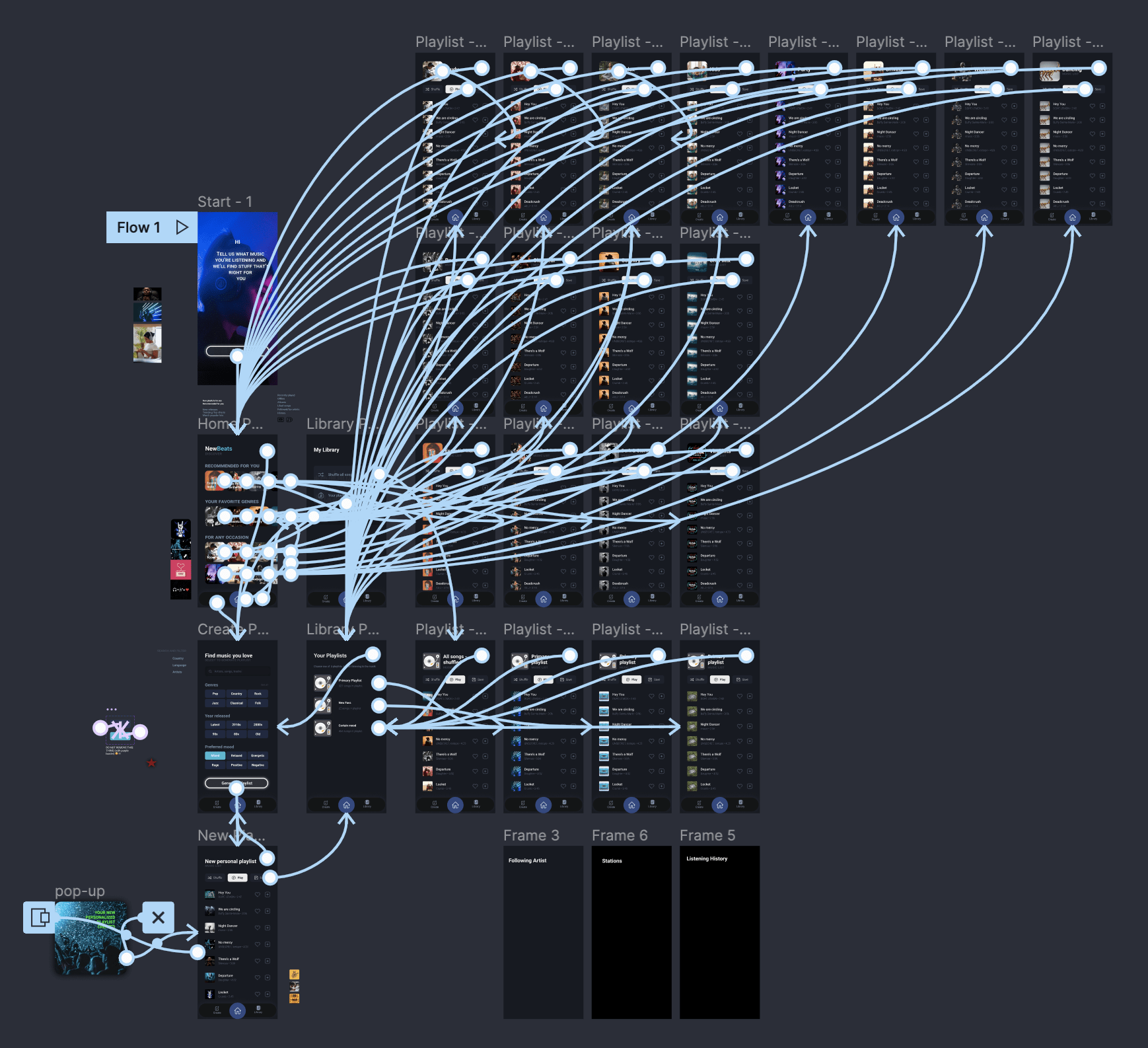AI-powered music recommendation system
User Centered Design Research
The goal of research was to assess the usability of our AI-powered music recommendation system that focuses on helping users find new music. To accomplish this, we conducted a usability study consisting of three participants where we asked them to complete a short series of tasks using a low-fidelity prototype we constructed. From this we determined that while users are excited by the potential of our design, they found some features confusing and identified missing features they wished to see included in our prototype. Based on this feedback, we have identified several improvements that include adding features or segments to reduce confusion and enhance the overall user experience.

Wireframes

Prototype
Purpose of research
The primary goal of this research study was to see how real users interact with our prototype to be able to identify areas of improvement to enhance the overall user experience. Our overarching research questions were:
- Which aspects of the prototype detract from the user experience?
- Do the users find our prototype useful? Would they use something like it again?
- What conclusions can we draw from the previous questions to guide future enhancements and modifications?
Personas
Our target audience was very diverse people of all ages, nationalities and lifestyles:
- Those who may want music that matches their mood or energy level at that moment.
- Those who previously used similar systems and are familiar with digital music streaming services, as well as those who decided to use it for the first time.
- The target user may want to create personalized playlists for themselves or share it with their own audience.
- They need to have a device that connect to the internet (smartphone/computer) to access the system.
Research findings
In terms of quantitative data, we got very consistent results. Our prototype was well received by all participants, with a completion time of less than one minute per task, a success rate for all tasks, and an average satisfaction rating of 4.9/5 for all tasks. Our qualitative data revealed that participants found our prototype easy to use and navigate. They also appreciated the clean and intuitive design, as well as the recommendation feature. Overall, they felt that this application made it much easier to find new music compared to existing applications. However, we were also able to identify some pain points for our users.
- Some users felt like there was a lot going on on the page. They would have preferred a simpler setup to avoid confusion about all the different use options.
- One user pointed out that our prototype seems to have a specific use case (finding new music) which is different from existing applications. This can be overwhelming at first.
- Some users wanted more functionality beyond just seeing playlists, such as being able to explore specific artists.
Reflection on Using Research Method
One benefit of this research method was that we were able to get an in-depth look at how users interacted with our design and prototype. This provided us with insight into how to make improvements to better serve our users by identifying specific pain points.
One drawback was that this method is that it was only able to explore one facet of our prototype, which was its usability. We were not able to fully engage with our users to understand what additional features they might like to see, and we were not able to truly assess the usefulness or practicality of our prototype. We could not determine whether or not our prototype is something that users would use of their own free will outside of a study. Just because the prototype is usable, does not mean that it would actually be used in the real world.
Through this study, we were able to practice using the concepts we learned from class, which helped us have a better and deeper understanding of the UCD. In addition, the method also inspired us to have better ideas on how to improve and reflect on the work we’ve done. More importantly, it helped us to learn how to learn new knowledge by practicing hands-on tasks in the team.